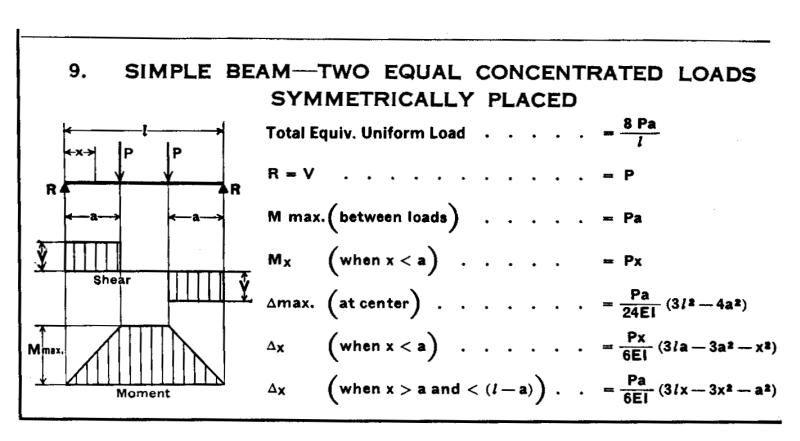I am attempting to size either an aluminum or steel channel to raise a load. The attachment shows this situation with two equal loads and two equal forces utilized to lift the load. The loads and forces are symmetrical as shown. The lifting force is under the channel pressing on the web. The channels are horizontal and turned with the legs facing down.
Using stress and deflection formulas I attempted to validate if a steel and/or aluminum channel will work for this application. The sizes are all noted on the diagram and the formulas for each are presented. It appears that I am significantly undersized looking at the bending stresses, but the deflection calculations do not seem to work.
At the very bottom of the calculations I also completed a deflection calculation using a rectangular box tube which I know to be very strong and actually has almost no deflection in this application. I had a box tube handy so I physically tried it.
I need to use a channel to eliminate the box tube height for this application.
Can someone review and tell me where my calculations are in error?
Thanks, Dave
Using stress and deflection formulas I attempted to validate if a steel and/or aluminum channel will work for this application. The sizes are all noted on the diagram and the formulas for each are presented. It appears that I am significantly undersized looking at the bending stresses, but the deflection calculations do not seem to work.
At the very bottom of the calculations I also completed a deflection calculation using a rectangular box tube which I know to be very strong and actually has almost no deflection in this application. I had a box tube handy so I physically tried it.
I need to use a channel to eliminate the box tube height for this application.
Can someone review and tell me where my calculations are in error?
Thanks, Dave


![[idea] [idea] [idea]](/data/assets/smilies/idea.gif)
![[r2d2] [r2d2] [r2d2]](/data/assets/smilies/r2d2.gif)